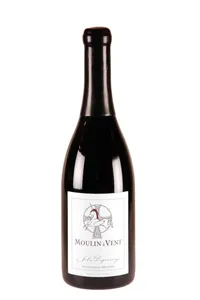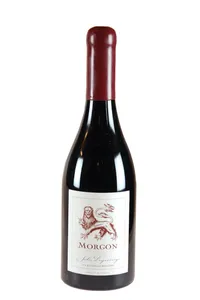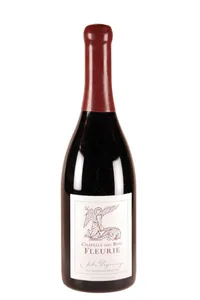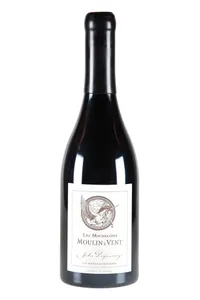Free delivery from Fr. 300 of purchase or 18 bottles, otherwise Fr. 15

Beaujolais
Appearing to be the geographical junction between what is known as Greater Burgundy and the beginning of the Côtes-du-Rhône, Beaujolais is much more than an "intermediate" vineyard, it is a wine country in its own right. Today it occupies about 15,000 hectares and produces about one million hectolitres of wine per year. It starts in the north with the Azergues valley and the village of Chasselas, and goes down to the charming commune of L'Arbresle, where the atmosphere of Lyon begins to be felt. All of this takes the form of a 55 km long and 12 to 15 km wide strip of vineyards. The western limit of the vineyard is the rounded relief of the mounts, a succession of hills and slopes that plunge gently and gradually to the bed of the Saône. The best parts of the vineyard are situated at altitudes of between 200 and 500 m, with, as one can imagine, considerable differences in maturity between a "high" Chiroubles and a "Fleurie". Chiroubles and a Fleurie from the bottom of the hillside.
.Everyone knows the story of Philippe le Hardi, Duke of Burgundy, who, by an edict in 1395, banished the unfair "Gaamez (Gamay) " from the vineyards of his duchy. Fortunately, the grape variety found a home further south, on the granite and schist of the Crus area. And there, the marriage was a happy one, the grape variety maturing much better on these poor and acidic soils, which give it a unique relief and perfume. Today, the diversity of styles is the order of the day, with traditionalists practising traditional Beaujolais vinification (semi-carbonic maceration) living side by side with the so-called "natural" winemakers (carbonic maceration in the strict sense of the word). (carbonic maceration in the strict sense), but also the followers of the Burgundy school (de-stemming and ageing in wood) and even - alas! - the many aficionados of the MPC (hot pre-fermentation maceration), locally called "thermos", which gives wines as black as ink but almost stillborn. The wine lover will choose according to his taste but the tradition has our favour.
.To say a word about the appellations, let's remember that in addition to the vast AOP Beaujolais (especially the south and the Pierres Dorées) and Beaujolais-villages (further north and homogeneous), the famous crus are 10 in number. Brouilly is based on granitic soils and gives birth to round, spontaneous and greedy wines, when they are not "twisted " by technological vinifications. Situated on a spur of volcanic rock in its centre, the Côte-de-Brouilly gives more structured and spicy wines, slow to develop. By going up in the north-west towards the granitic matrix, Régnié, the most recent of the growths, gives sometimes tender and greedy wines, sometimes structured, when they look at Morgon. And to speak about this famous and vast neighbour, cut out in " quartiers ", the common point of the wines of the commune is this inimitable character of spices and kirsch, which varies from the fermented of youth to more suavity in ageing. Situated one floor higher up the hillside, Chiroubles is more reminiscent of Fleurie in its flavours, with the particular sapidity and freshness of the high altitude granites. In Fleurie, the pink granite reigns supreme and the wines take on inimitable scents of flowers and pepper, approachable from their youth. The northern part of the appellation takes us directly to the top of the queen appellation, Moulin-à-Vent, straddling two communes: Chénas in the northernmost and highest part, Romanèche-Thorins in the lowest and southern part. The centre of the cru abounds in great terroirs which, when treated with all due care, give the greatest wines of the region, capable of ageing as well as great Burgundies, the resemblance in time even becoming striking. As for the Chénas cru, it reminds us of its Moulin-à-Vent twin with less body and a little more vivacity. Finally, further north, with Juliénas and St-Amour, we leave the granites to go towards the clay-limestone, which gives the Gamay another tannic base and a spontaneous fruitiness, even if the best Juliénas age for twenty years or more.
79 items

Moulin-à-Vent, Jules Desjourneys - 2011
Moulin-à-Vent

Moulin-à-Vent, Chassignol, Jules Desjourneys - 2012
Moulin-à-Vent

Moulin-à-Vent, Les Michelons, Jules Desjourneys - 2012
Moulin-à-Vent

Moulin-à-Vent, Jules Desjourneys - 2012
Moulin-à-Vent

Fleurie, La Chapelle-des-Bois, Jules Desjourneys - 2012
Fleurie

Fleurie, Les Moriers, Jules Desjourneys - 2012
Fleurie

Morgon, Vieilles Vignes, Jules Desjourneys - 2012
Morgon

Chénas, Le Jugement Dernier, Jules Desjourneys - 2012
Chénas

Morgon, Vieilles Vignes, Jules Desjourneys - 2014
Morgon

Moulin-à-Vent, Chassignol, Jules Desjourneys - 2014
Moulin-à-Vent

Fleurie, La Chapelle-des-Bois, Jules Desjourneys - 2014
Fleurie

Moulin-à-Vent, Les Michelons, Jules Desjourneys - 2014
Moulin-à-Vent